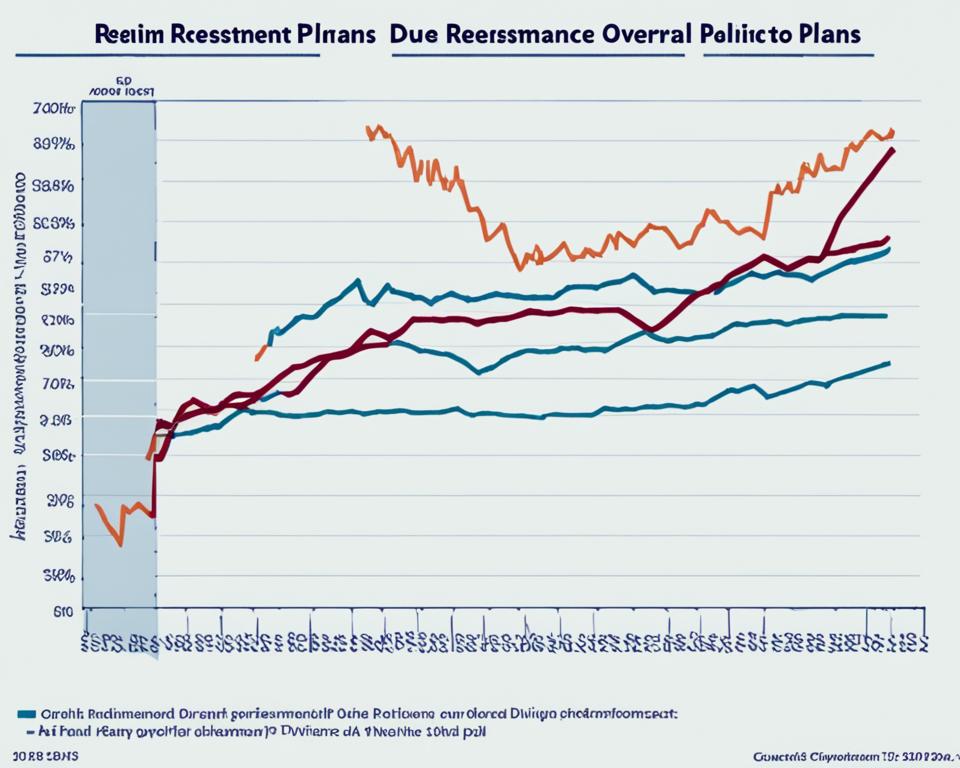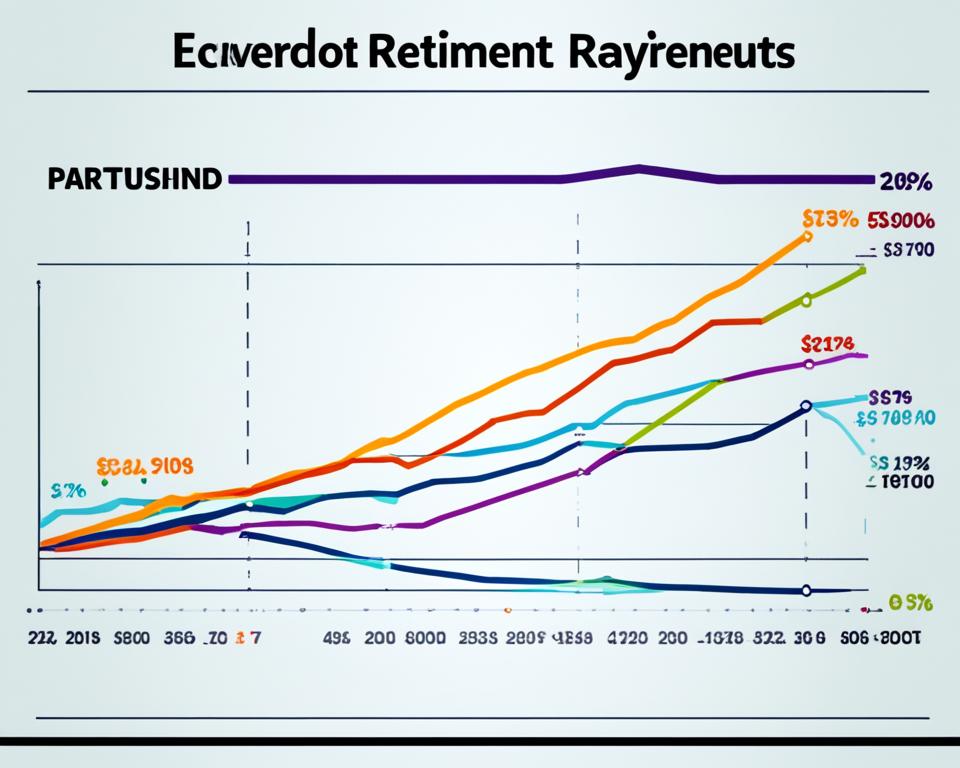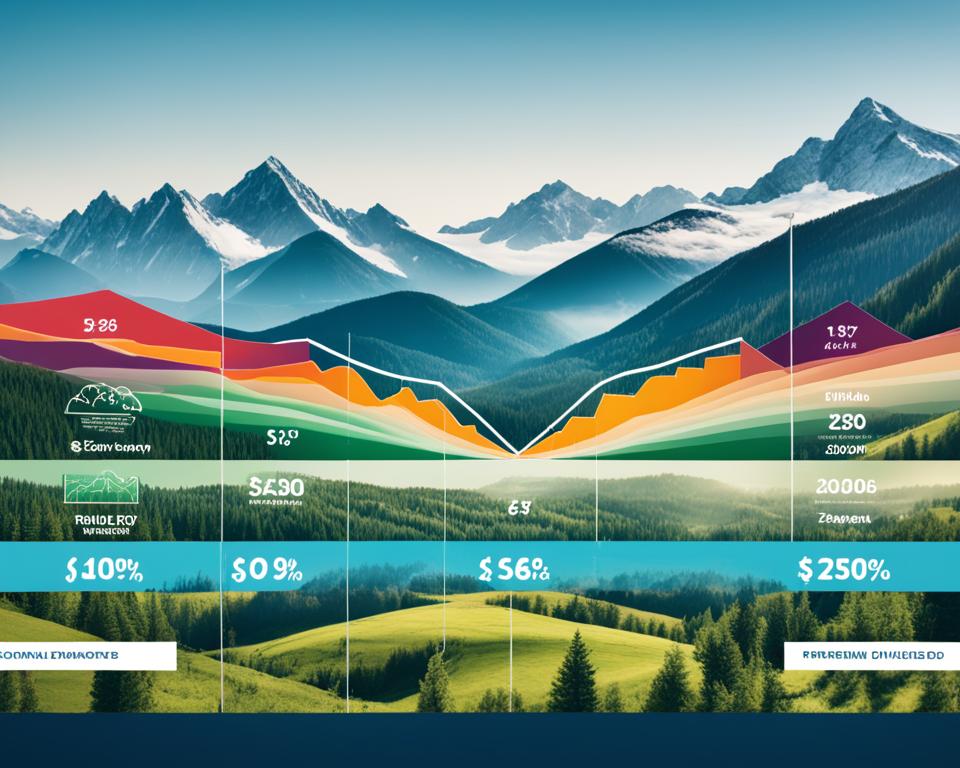Investors seeking to maximize their portfolio growth often contemplate the pros and cons of using Dividend Reinvestment Plans (DRIPs). Within the scope of portfolio management, DRIPs provide an option to reinvest cash dividends into additional shares, rather than taking a cash payout. The allure of DRIP investing lies in the potential to reap amplified returns over time, achieved through the power of compound interest. However, the strategy is not devoid of considerations, and a careful dividend reinvestment strategy evaluation is vital.
While the potential for enhanced long-term growth makes reinvesting dividends appealing, investors must be heedful of the suitability of this strategy with their financial situation. Care must be taken to evade the pitfall of an unbalanced portfolio, a potential disadvantage of dividend reinvestment plans, which could emerge if not properly managed.
Key Takeaways
- Dividend Reinvestment Plans (DRIPs) enable reinvestment of cash dividends into additional shares, fostering long-term portfolio growth.
- The compounding impact of DRIP investing can lead to significant wealth accumulation over time.
- Investors must partake in diligent dividend reinvestment strategy evaluation to ensure alignment with their financial goals.
- Though DRIPs harness potential advantages, they also entail probable drawbacks, like creating an unbalanced portfolio due to excessive concentration in a single stock or sector.
- The decision to reinvest dividends should be made in accordance with individual financial situations and portfolio management strategies.
Understanding Dividend Reinvestment Plans (DRIPs)
If you’re looking to expand understanding of investment strategies, one of the key aspects to consider is the Dividend Reinvestment Plan (DRIP). This method facilitates the use of dividends to secure more shares in a company or fund, setting the stage for accelerated growth via compounding. The keyword here is compounding, but before we shed light on that, let’s delve into the definition of DRIPs and how they function in the real world of investments.
Definition of DRIPs
DRIPs are an investment vehicle where dividends from stocks or funds are not paid out in cash, but instead used to acquire more shares of the same stock or fund. This is an important feature that sets DRIPs apart: the very design of the plan allows for dividends to be issued as additional stock rather than cash payouts. This carries certain advantages as well as drawbacks to investors.
How DRIPs Work in Practice
In essence, DRIPs lay the groundwork for automatic reinvestment of dividends on the declaration date. This allows investors to bypass potential brokerage fees involved in the purchase of additional shares. Quite often, DRIPs offer shares at discounted prices, and allow for the acquisition of fractional shares—an advantage not normally available in most other investment types. These factors contribute towards making DRIPs flexible, consistent, and cost-effective for investors.
The Role of Compounding in DRIP Investing
The linchpin of DRIP investing lies in the power of compounding. Every reinvested dividend helps accumulate more shares, which can then provide further dividends, setting up a cycle of growth that can lead to significant wealth accumulation over time. Given the potential for DRIPs to bolster investment value through consistent share purchases, they are worth considering in a comprehensive dividend reinvestment strategy evaluation.
By offering an automated, cost-efficient pathway to enhancing one’s holdings, DRIPs represent a powerful tool for long-term investment strategies. However, like any investment strategy, they have their benefits and drawbacks. A thorough evaluation, keeping in mind both the potential for growth and the associated risks, therefore becomes critical for anyone considering using DRIPs.
In the following sections, we will delve into the specific advantages and disadvantages of dividend reinvestment plans, allowing you a deeper insight into their role in the field of investments.
Pros and Cons of Using Dividend Reinvestment Plans
Defying the traditionally held belief that all things valuable come with a price, dividend reinvestment plans (DRIPs) have proven to be an anomaly. By offering unique incentives such as bypassing intermediary costs and potentially acquiring shares at a discount, they have redefined the paradigm of wise investing. Yet, like all great things, DRIPs have their fair share of nuances that need careful attention. So, let’s delve deeper into the advantages and disadvantages of dividend reinvestment plans.
Accessibility of Automatic Reinvestment
A prime advantage of dividend reinvestment plans lies in the hands-off accessibility enjoyed by its investors. The convenience of purchasing more shares without worrying about intermediary transaction costs is a blessing in disguise for long-term investors. Imagine the scenario where dividends are automatically channeled towards acquiring more equity in the company without having to lift a finger. One can truly appreciate the magic of compound interest through drip investing advantages where your money earns money, only to continue earning more.
Long-term Growth through Compounding
When it comes to wealth accumulation, the consistent acquisition of additional shares over time plays a pivotal role in leveraging the power of compounding to foster long-term growth. Owing to the very nature of DRIPs, it is not just the initial investment, but also the reinvested dividends that become subject to growth. Hence, with each subsequent cycle of reinvestment, the potential value of the investment compounds, showcasing the classic dividend reinvestment plans analysis known as compound interest.
Potential for Unbalanced Portfolio
While the virtues of DRIPs definitely seem enticing, one must remain aware of the potential pitfalls. While automatic reinvestments offer ease, they could inadvertently lead to an excessive concentration in a single stock or sector. This unbalancing act can increase an investor’s exposure to market volatility, leading to heightened risk. Additionally, automatic reinvestment overlooks the current market valuation, possibly leading investors to unknowingly purchase overvalued shares. Thus, while utilizing the advantages of dividend reinvestment plans, one must also stay alert to the disadvantages of dividend reinvestment plans.
| Advantages | Disadvantages |
|---|---|
| Lower transaction costs | Potential for overconcentration |
| Ability to harness compounding | Potential for overvalued purchases |
| Hands-off approach for long-term investors | Requires careful monitoring for balanced portfolio |
Evaluating the Impact on Long-term Wealth Building
In the pursuit of long-term wealth accumulation, understanding the mechanics of a dividend reinvestment plan can be vital. The simplified narrative that surrounds DRIP investing advantages often points to the compounding interest effect. Let us delve into this fascination around the dividend reinvestment plan analysis through the lens of long-term wealth creation.
DRIPs operate in a unique way to maximize each dollar invested. When dividends are reinvested, a larger base of capital is created. This effectively means that each subsequent dividend payment has a larger base to grow, yielding a larger dividend amount.

Consider the process of DRIP investing like a snowball effect. With each dividend payment, and subsequent reinvestment, more shares are purchased. This greater quantity of shares then produces a greater total dividend in the next payment period, which is then reinvested for even more shares. This cycle continues, thereby steadily amplifying one’s investment holdings.
This strategy is particularly beneficial when executed in a thriving company, where consistent growth in dividend payout and stock price appreciation is the norm. However, the opposite is also true. Should the company experience a downturn, DRIP investors are not immune from experiencing losses.
The dividend reinvestment plans benefits, undeniably, play an instrumental role in wealth accumulation. Nonetheless, careful vigilance and understanding of the mechanism of DRIPs can go a long way in securing desirable returns.
Comparing Cash Dividends vs. Reinvested Dividends
Every investor experiences the crossroads of dividend investment strategy: To take immediate income in cash or invest for future growth by reinvesting dividends. Both options come with their unique set of advantages and can impact the compound returns derived from an investment portfolio.
Immediate Income vs Future Growth
Cash dividends cater to the immediate income need, serving as an inflow that can be utilized for everyday expenses or invested in different opportunities. On the other hand, reinvested dividends guide investors towards the path of future growth. By harnessing the power of compounding, reinvestment of dividends results in purchasing additional shares, which subsequently generate their own dividends in the long run.
Calculation of Compound Returns Over Time
The ultimate influence of a dividend reinvestment strategy can be gauged through the calculation of compound returns over time. Reinvesting dividends can create a compounding cycle leading to a significant impact on the total value of investment holdings. This strategy emphasizes the power of compounding as a key driver for long-term wealth accumulation.
To illustrate this effect, let’s consider a simple example comparing the impact of cash dividends and reinvested dividends over a period of 20 years with an annual return rate of 5%:
| Year | Cash Dividends | Reinvested Dividends |
|---|---|---|
| 0 | $100,000 | $100,000 |
| 5 | $128,253 | $132,663 |
| 10 | $164,493 | $177,215 |
| 15 | $211,407 | $236,600 |
| 20 | $271,264 | $315,248 |
Note: This table showcases a comparative overview of growth in investment value when dividends are taken in cash and when dividends are reinvested over a 20-year investment timeline.
Analyzing DRIP Benefits: Discounted Shares and Fractional Ownership
Dividend Reinvestment Plans (DRIPs) encompass numerous benefits that appeal to a wide range of investors. Specifically, the features of discounted shares and fractional ownership stand out as two noteworthy advantages. Understanding these facets can aid in fully grasping the benefits and potential drawbacks of participating in a DRIP scheme.
The first key advantage of DRIP investing is the option to acquire discounted shares. Companies providing DRIPs often offer shares at discounted prices – below the current market value. Such a strategy not only facilitates more extensive participation of investors but also dramatically lowers the average cost per share over time, enhancing the value of the investment.
An equally compelling benefit is the fractional ownership that DRIPs provide. Regular dividend payouts may not always amount to the price of a whole share. With DRIPs, however, investors can acquire fractional shares, allowing every inch of their dividends to be invested efficiently, leading to slow and steady wealth accumulation.
The table below highlights these significant aspects and their implications in more detail:
| Feature | Description | Benefits |
|---|---|---|
| Discounted Shares | Purchase shares at prices below market value | Lowered average cost per share, increase in investment value |
| Fractional Ownership | Purchase of partial shares using dividends | Efficient use of dividends leading to accumulation of investment over time |
While these features exemplify the major advantages of DRIP investing, it’s important to note that they do not negate the potential downsides associated with this investment strategy. The overall success in utilizing DRIPs in one’s investment portfolio depends heavily on individual financial goals, market conditions, and the company’s performance in which the investment is made. Any decision to participate in a DRIP should be accompanied by diligent research and careful consideration.
Disadvantages of Dividend Reinvestment Plans
While Dividend Reinvestment Plans (DRIPs) offer many benefits, they also harbor potential drawbacks that investors should consider thoughtfully. Analyzing the potential pitfalls of this investment strategy can enable more effective decision-making and portfolio management. Now, let’s delve into two notable disadvantages associated with DRIPs – lack of investment diversification and potential for overvaluation concerns.
Lack of Investment Diversification
One of the significant drawbacks of dividend reinvestment plans is the potential lack of investment diversification. When an investor decides to reinvest their dividends into the same stock or fund, they may inadvertently magnify their exposure to the specific risks inherent to that particular asset. The potential lack of investment diversification can undermine an investor’s ability to spread risk and might result in a portfolio overly concentrated in certain assets or market sectors.

Potential for Overvaluation Concerns
Another concern that might arise with the consistent use of DRIPs is the potential for overvaluation. This typically happens when reinvestments occur irrespective of the stock’s current valuation – DRIPs automatically purchase additional shares when dividends are declared, even if the stock is currently overpriced. The risk of investing at peak prices can potentially lead to overvaluation concerns and may result in a less favorable return on investment over time.
Both lack of investment diversification and potential for overvaluation concerns illustrate the disadvantages of dividend reinvestment plans and emphasize the importance of conducting a periodic portfolio review. Balancing your portfolio and keeping a check on the valuation of the assets can help mitigate these drawbacks and ensure a more balanced investment strategy.
When should You Consider Opting for Cash Dividends?
Investing encompasses an array of strategies, one of which is the decision to reinvest dividends or receive them as cash. Dividend reinvestment plans have been explored in the previous sections, highlighting their potential for wealth accumulation over a long term. However, there are conditions and life events that warrant receiving these payments as cash dividends. Weighing this decision requires a comprehensive understanding of individual financial goals and circumstances, along with a well-rounded dividend reinvestment plans analysis.
Income Needs in Retirement
Income generation during the retirement years is a primary concern for many individuals. Steady cash dividends can significantly contribute to these income needs in retirement, providing retirees with a consistent source of revenue. This cash flow can be utilized for daily living expenses, healthcare costs, and other financial commitments, without having to sell off assets. Hence, those navigating their golden years may opt for cash dividends as a means of maintaining their lifestyle without depleting their investment portfolio.
Portfolio Rebalancing Strategies
A disciplined approach to portfolio management often involves periodically reassessing and adjusting one’s investment mix. This is where cash dividends can play a vital role. Cash dividends provide investors with liquid assets that can be used to reposition their portfolio in accordance with their risk tolerance, financial objectives, and market conditions. Portfolio rebalancing strategies often emphasize the necessity of diversification. In such cases, the cash received from dividends can be invested into different asset types or sectors, enhancing overall portfolio balance and reducing risk exposure.
In conclusion, both cash dividends and dividend reinvestment plans offer distinct benefits and play a significant role in financial planning. A sound understanding of one’s financial situation, retirement goals, and investment strategies is key to making an informed decision. Always remember, investment planning is not a one-size-fits-all phenomenon and personalizing strategies based on individual needs and circumstances is pivotal to achieving long-term financial success.
Types of DRIPs: Company, Third-Party, and Broker-Operated Plans
Investors interested in maximizing their portfolio through DRIPs have three main options to consider: company-operated, third-party-operated, and broker-operated DRIPs. Each type of these DRIPs provides great utility but also comes with its own operational differences.
Distinct Features and Operational Differences
Company-operated DRIPs are typically managed by a department within the company, ensuring that investment policies align directly with the company’s vision and goals. Third-party-operated DRIPs are outsourced plans, wherein an independent agency manages the plan to save on internal costs. Broker-operated DRIPs are offered by a brokerage, providing diversified investment options and additional financial tools at a fee. Each DRIP type presents unique advantages and considerations that investors must evaluate before choosing the plan that best fulfills their investment goals.
Pros and Cons of Each DRIP Type
Each type of DRIP comes with its unique benefits and drawbacks. Let’s discuss the pros and cons specific to company-operated, third-party-operated, and broker-operated DRIPs.
| Type of DRIP | Pros | Cons |
|---|---|---|
| Company-operated DRIP | Investor-friendly policies, Potential for Share Discounts, Direct interaction with company | Limited investment options, No control over purchase timing |
| Third-party-operated DRIP | Cost-Effective, Streamlined Processes | Possible service quality issues, Intermediary fees |
| Broker-operated DRIP | Diverse investment opportunities, Additional financial tools | Potential for higher fees, Less personalized service |
In conclusion, it is vital to thoroughly evaluate your financial objectives and understand the intricacies of the operational differences among the types of DRIPs before deciding on the best plan for your investment strategy.
Strategies for Integrating DRIPs into Portfolio Management
Investors targeting successful value-building over time should consider the potential benefits of using Dividend Reinvestment Plans (DRIPs). A long-term investment strategy, DRIPs allow dividends to accumulate efficiently, contributing to the growth of the portfolio. But it is essential first to understand how to align DRIPs with your broader financial goals.
Setting Long-term Investment Objectives
Every investment strategy should begin by defining clear, long-term objectives. What is the ultimate purpose of your investment? Is it to build wealth, provide income, or perhaps a combination of both? With its cost-effective reinvestment feature and compounding benefits, DRIPs might be perfectly suited to investors whose goals are centered on growth and wealth accumulation. However, should your investment strategy require immediate cash returns, you may need to evaluate if DRIPs are the right choice for you.
Assessing the Role of DRIPs in Achieving Financial Goals
Once you have your long-term investment objectives, the next step is to determine the role of DRIPs in your portfolio. Will this investment serve as the primary growth driver, or is it part of a diversified strategy? Various factors such as investment time horizon, income needs, and portfolio diversification requirements should be under consideration. As part of your dividend reinvestment strategy evaluation, you may need to calculate potential returns against your financial goals. This will help determine whether this investment will indeed help you in achieving your financial goals.
To sum up, integrating DRIPs into portfolio management effectively begins with objective setting, followed by a careful evaluation of DRIPs against those objectives. With their potential for compounding wealth over time, DRIPs can become a beneficial part of your investment portfolio, so long as it aligns with your general financial aspirations.
Understanding Tax Implications of DRIP Investing
Investing in Dividend Reinvestment Plans (DRIPs) is not just about optimizing your investment portfolio—it’s also essential to understand the associated tax obligations. Navigating the tax intricacies of DRIP investing can be complex, but it’s a necessary part of your financial planning initiative, affecting both reinvested dividends and discounted shares.
Treatment of Reinvested Dividends for Tax Purposes
Contrary to what many investors might think, reinvested dividends are considered taxable income by the Internal Revenue Service (IRS). Even if these dividends are used to purchase additional shares, they are generally subject to the same tax obligations as if they were received in cash.
How Discounts on Shares Affect Your Tax Obligations
Discounts on shares purchased through DRIPs can also have a significant influence on your tax liabilities. These discounts alter the cost basis of your acquired shares and consequently impact how your capital gains are calculated upon sale. As rely on DRIP investing grows, maintaining accurate records of all transactions becomes increasingly crucial to accurately report and pay your taxes on both dividends and capital gains.
Considering the complexities of tax implications in DRIP investing, it’s always advisable to consult a tax professional. This allows investors to navigate the nuances and comply appropriately with their tax obligations, maximizing the long-term benefits of their investment strategy.
FAQ
What are the pros and cons of using dividend reinvestment plans (DRIPs) in portfolio management?
The main benefits of using DRIPs include the compounding effect of reinvesting dividends, the potential to purchase shares below market value, and fractional ownership. On the other hand, disadvantages may include risk of over-exposure to a single stock or sector, possibility of reinvesting at peak prices, and tax obligations on reinvested dividends.
How do DRIPs work in practice?
DRIPs automatically reinvest dividends on the declaration date into additional shares of the same stock, often at discounted rates and without brokerage fees. This allows for accelerated growth through compounding.
How does compounding work in DRIP investing?
In DRIP investing, dividends are reinvested to purchase additional shares that subsequently generate their own dividends. This cycle continues, creating a compounding effect that can significantly increase the total value of investment holdings and dividends received over time.
What is the impact of dividend reinvestment on long-term wealth building?
Reinvesting dividends can significantly impact long-term wealth accumulation. By continually acquiring more shares, the total value of investment holdings and the total amount of dividends received can increase substantially.
What are the benefits of fractional ownership in DRIP investing?
Fractional ownership allows for every dividend to be utilized efficiently, thereby reducing the cost per share over time. It is especially beneficial in DRIP investing where dividends are used to buy additional shares.
How can opting for cash dividends help in portfolio rebalancing?
Cash dividends can provide funds for investing in other assets to maintain a balanced portfolio. They can also be used to exploit new investment opportunities.
What are the different types of DRIPs?
DRIPs can be classified into company-operated, third-party-operated, and broker-operated plans. All these offer unique benefits but also carry their own set of considerations such as potential costs and control over purchase timing.
How can one integrate DRIPs into portfolio management strategies?
To incorporate DRIPs into portfolio management, investors should define their long-term investment goals clearly. They also need to consider factors such as investment time horizon, income requirements, and portfolio diversification needs.
What are the tax implications of DRIP investing?
Reinvested dividends are generally taxable as income even if used to purchase additional shares. Furthermore, discounts on shares can affect tax obligations as they change the cost basis of the acquired shares, thereby impacting capital gains calculations.












